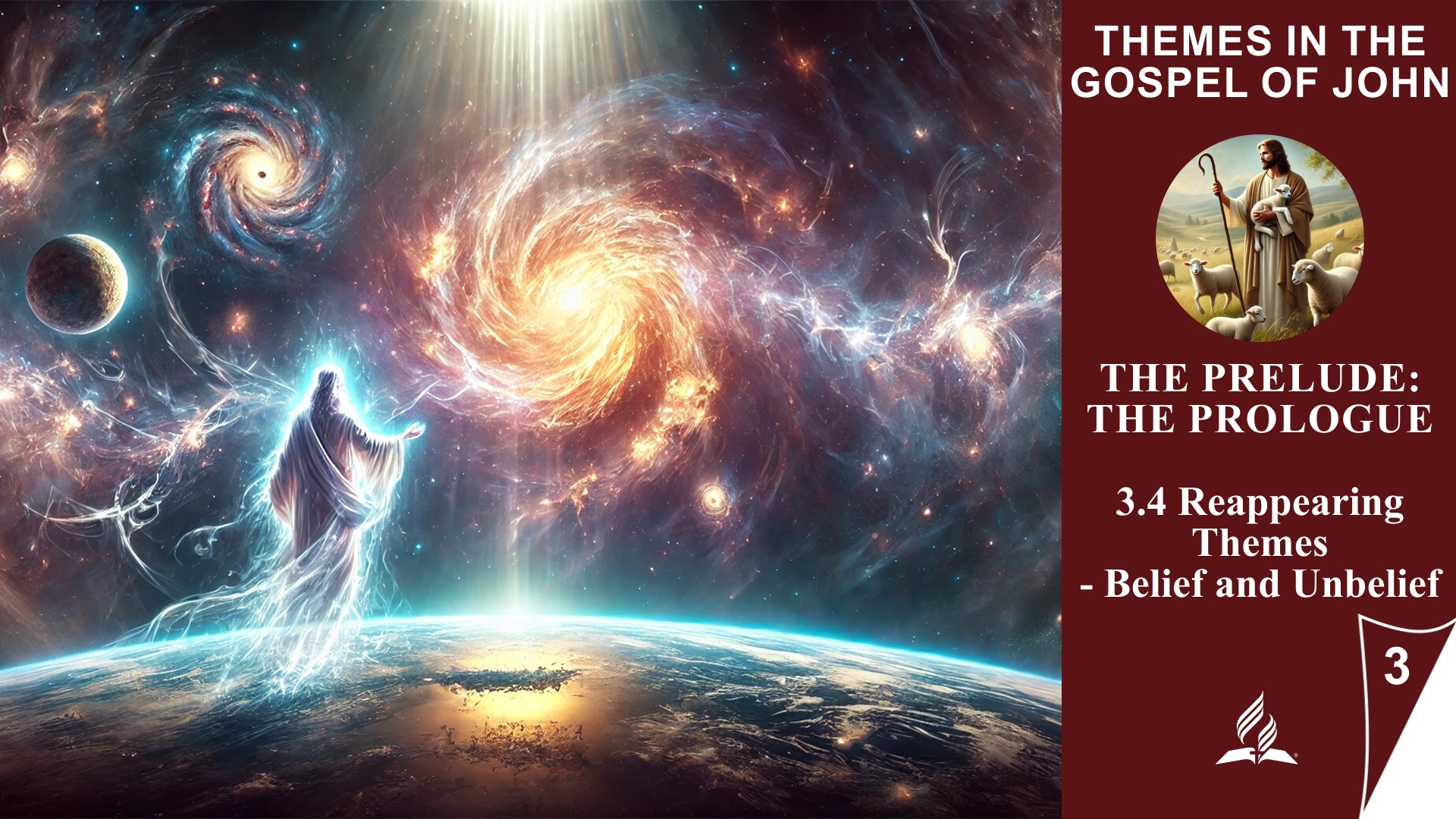

3.4 Reappearing Themes – Belief and Unbelief
The Reaction to the Light
Read John 3:16–21, John 9:35–41, and John 12:36–46. How do these texts repeat the theme of faith versus unbelief that appears in the prologue?
In John 3:16–21, John 9:35–41, and John 12:36–46, the central theme of faith and unbelief, which is already introduced in the prologue of the Gospel, is reiterated. These texts show a clear division between those who believe in Jesus and accept Him as the Light of the world and those who reject Him and remain in darkness.
John consistently presents two groups in his Gospel: those who recognize Jesus as the Messiah and those who, despite having the opportunity, reject Him. Faith here is not just a passive agreement but an active process manifested in openness to Jesus and His light. This is reflected in the Greek verb “pisteuō,” which is used 98 times in this Gospel. It emphasizes that faith is a living, active action—a constant trust and walking in the light of Jesus.
Those who believe in Jesus open themselves to His light and allow themselves to be shaped by Him, even when He confronts or corrects them. They are willing to let their lives be reflected by the light of Jesus and are thereby transformed. On the other hand, unbelievers reject the light because they prefer darkness. They often meet Jesus with resistance, wanting to preserve their own traditions and ideas, and they judge Him instead of allowing His light to judge them.
These recurring themes of faith and unbelief highlight that faith in Jesus is not merely an intellectual assent but a fundamental decision for the light and truth that transforms life.
In what way do you live out your faith in Jesus, rather than merely giving intellectual assent to Him as the Messiah? Why is it important to know the difference? (See Matthew 7:21–23.)
It is important to recognize the difference between living out faith and merely giving intellectual assent to Jesus because genuine faith is demonstrated through actions. Matthew 7:21–23 warns us that it is not enough to simply know the right things about Jesus or to verbally confess Him; our faith must be expressed through obedient actions. Jesus says that not everyone who says “Lord, Lord” will enter the kingdom of God, but only those who do the will of the Father.
Living faith is shown in the decisions we make daily: how we treat others, how we trust God in difficult situations, how we practice love and forgiveness, and how we strive to live according to God’s commands. It involves making our faith active and letting it shape our lives rather than remaining on a theoretical level.
It is important to recognize the difference because mere intellectual faith does not bring about real change in the heart and lifestyle. Genuine faith transforms us, while simply knowing about Jesus without application does not build a deep relationship with Him. The goal of faith is to be in a living, obedient relationship with Jesus that shapes our lives and positively affects the lives of others.
The connection between the theme of “Faith and Unbelief” and our daily lives and faith is profound and practical. John’s Gospel shows us that faith is not just an intellectual agreement but an active, lived decision that fundamentally shapes our lives. This decision to believe or not believe in Jesus has direct implications on how we live our daily lives.
-
Faith as a Lifestyle Faith, as depicted in the Gospel of John, is not just a belief in the mind but a daily choice to follow Jesus and His light. This means that our faith must be reflected in our behavior—in our relationships with others, in our integrity, and in our willingness to be shaped by Jesus. Faith is not something we live only in church or when reading the Bible but something that manifests in every decision and action.
-
Light and Darkness in Daily Life John often speaks of light and darkness as metaphors for faith and unbelief. In daily life, this means consciously choosing to live in the light of Jesus by allowing God’s truth to penetrate our lives. This can involve acknowledging difficult truths about ourselves, admitting our mistakes, and letting God’s light guide us, even when it is uncomfortable. On the other hand, it means avoiding darkness—things like self-deception, selfishness, and sin that lead us away from God.
-
Faith in Action As seen in Matthew 7:21–23, it is not enough to merely say “Lord, Lord.” Living faith is demonstrated in our actions. This means that in everyday life, we do not only believe in Jesus theoretically but practice love, forgiveness, patience, and mercy in our behavior. Faith in Jesus should transform us so that we positively influence our surroundings and the people around us.
-
Dealing with Challenges The kind of faith John speaks about also involves trust. In daily life, this means trusting God in difficult situations instead of relying on our own strength or control. Faith leads us to look to God in crises, uncertainty, and suffering, trusting that He is working everything for good.
-
The Importance of Obedience Faith is inseparably linked with obedience. In daily life, this means that we not only know what God expects from us but also do it. This might involve making difficult decisions, letting go of old habits, or standing up courageously for what is right, even when it costs us something.
Conclusion:
The themes of faith and unbelief that John addresses in his Gospel challenge us to actively live out our faith in daily life. Faith is not just a mental agreement to theological truths but a deep transformation that is reflected in how we interact with others, respond to challenges, and choose to live in the light of God. This decision shapes our lives and brings us into a living, powerful relationship with God.

Our faith in Jesus is not only shown in words but in the active decision to accept His light in our lives and follow Him.
Visited 36 times, 1 visit(s) today







